Stavrolite
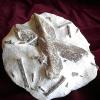
 Characteristics of the mineral.
Characteristics of the mineral.
Silicate of aluminum and iron Al4Fe [Si2O10] (OH) 2, an unusual natural mineral, forming splices of crystals of lorenzenite, reminiscent of the shape of a cross. Reddish brown, brown, black, rarely dark blue (lyusakite) color, hardness 7. Otherwise staurolites are called cross stones. This feature is reflected in the name of the stone (Greek stauros - cross, lithos - stone), it is known among the ancients as lapis crusifer, a stone-cross. They were very popular in Russia as a symbol of Christianity. It is curious that the individual parts of the staurolite cross can intersect not only at an angle of 90 ° , but also at an angle of 60 ° . The cross of the latter type is known in the Christian world as the "cross of St. Andrew" (it is preferable in Ukraine, "maple leaf" - in Canada).
Staurolites are widely distributed in Russia on the territory of the Kola Peninsula and the Southern Urals. This interesting mineral is often found among mica schists. Deposits of staurolites exist also in Italy, France, Germany, Austria and some other countries. In the US they are found in the states of Virginia and Montana. In the jewelry business staurolites are practically not used, it is not a precious or ornamental mineral, but on the market you can find crosses made of interlocking crystals of staurolite (both cleaned from slates and with a piece of rock), and stylrolite inserts in artisanal jewelry made of silver and Melchior, as well as in leather products.
This is a 100% natural natural formation, crystals are naturally split. The stone handler should be able to distinguish from the total mass of intergrowths and the surrounding rock such crystals of crystals that have the right shape and will be in demand among buyers - staurolites: rectangular Christian and oblique Andreev crosses, clusters in the form of maple leaves or six-beam stars. Education and splices of ugly (unaesthetic) forms of jewelry value as inserts in products usually do not have - an individual perception of the owner.
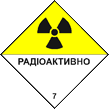 Physical features of staurolites.
Physical features of staurolites.
This mineral can contain radioactive components . From the point of view of crystal physics, staurolites crossed at an angle of 60 or 120 degrees are right and safe from the point of view of the level of radiation (up to 19-24 milli / g / hour) - they are undamaged radiation and therefore are more safe to handle and wear - pay attention On a relatively safe handmade brooch with staurolites ("St. Andrew's Cross" in mica schists at an angle of 120 degrees - in the form of a "maple leaf").
If the staurolites coalesce at an angle of 90 degrees , the probability is high that this shift in the growth of the crystals is caused by an increased level of radiation from staurolites (from 29-32 milli-radent / hr and higher) -shifts of self-attainment (autoepitaxy) of the staurolite crystals themselves under the influence of an increased background of radiation (The norm of natural radiation is 17-24 millicorentgen / hour).
"Correct" Christian Orthodox (orthodox) styloliths-crosses (especially those freed from the host rock) with prolonged wearing on the neck can cause radiation damage to the thyroid gland and cause its changes (including oncological ones). Similar local injuries can be caused by the prolonged wearing of dangerous staurolites directly on the chest or in pockets of men's trousers. Because of the high background of radiation, these stylists are dangerous for health (with constant wearing), men leading a hermitic way of life - and this is harmful to their health (they lead an unhealthy lifestyle).
It is safe to wear staurolites with a low level of radiation, regardless of their kind on the hands (in rings and bracelets - "wristbands") and on their legs - as far from the thyroid gland, birthmarks, large moles (especially bulging), from the chest, superficial lymphatic Nodes, and the like. Easily damaged by radiation objects on the human body. In any case, for safety and environmental reasons, it is not recommended to carry potentially radioactive stones and minerals constantly and keep large samples of such minerals in the apartment or office (the house and apartment are not a mineralogical museum with a permissible radiation level from 32 to 120 milli / Special exposition and mineralogical spetshranov state institutions).
Radiation from a point object decreases in proportion to the square of the distance to this object. Moving 2 meters from a dangerous object, you will reduce the level of learning from this object by 4 times. Going 10 meters, you reduce the radiation level of this object by 100 times. If the object has a point source of radiation of 2000 milli / g / hr with a natural background of ambient radiation of 19 milli / g / hour (total 2000 + 19 = 2019 milli / g / hour), moving away by 10 meters, you will secure yourself to a radiation level of 20 milli / Object and 19 milli-radentgen / hour from the environment (the total level of radiation radiation from the object and the environment will be 20 + 19 = 39 milli-radentgen / hour).
Dangerous is the direct contact with the body and the wearing of point and diffuse sources of radiation and radioactive components on the body (about 50% of the radiation is absorbed by contact with the outer surface of the body and about 100% of the radiation - when a radioactive or contaminated object is ingested). The most dangerous is the direct ingestion of radioactive components, stones and minerals, including powdered and especially soluble in liquid. All unauthorized injections of radioactive preparations are categorically prohibited.

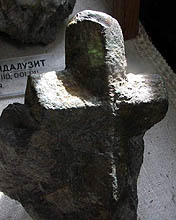
Left. Staurolite (doubles up to 3 cm). Antananarivo prov. Madagascar. Photo: © А.А. Evseev.
On right. Staurolite (double ~ 10 cm). Claremont, New Hampshire, USA. Photo: © А.А. Evseev.

Stavrolite doubles from Madagascar. V. Levitsky
The size is too small and straight "crosses" do not come across.
Magic properties of stones.
Not surprisingly, due to its form, staurolite in the form of a proper Christian cross has long been considered a strong Christian amulet capable of protecting a person (and especially a child) from the effects of black magic. The most valuable in terms of magic crystals in the form of a cross, crossing at right angles. More decorative star-shaped staurolites, not extracted from the rock, dark on a light gray background. Another name for staurolite, though outdated, is the stone of happiness. Due to its form, staurolite in the form of a cross was considered a strong Christian amulet capable of protecting a person (and especially a child) from the effects of black or pagan magic. As a divine symbol, he takes away from the owner of evil spirits. Even the US presidents did not overlook it. Roosevelt, Wilson and Harding wore staurolite as an amulet.
Staurolite is not contraindicated in any of the signs of the Zodiac. It can be worn by everyone, the right cross (crystals crossed at an angle of 90 degrees) are highly spiritual and devout people. Unacceptable people are most shown staurolites in the form of a maple leaf or St. Andrew's cross (crystals crossed at an angle of 60 or 120 degrees) - it is recommended to wear just such staurolites.
A beautiful legend is connected with the origin of the stone. The spring where the stone was found was very much loved by forest fairies. They were leading dances round the spring, singing songs. And one day, in the midst of merriment, an elf flew past them, went down to the fairies and told a sad story about the crucifixion of Christ. The fairies burst into tears, and their tears, falling to the ground, turned into crosses.
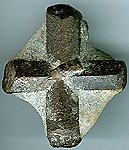
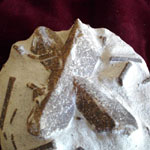
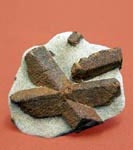


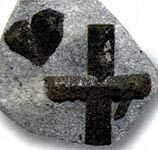
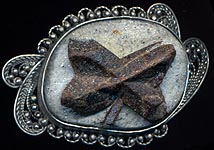



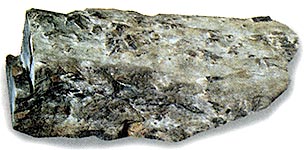
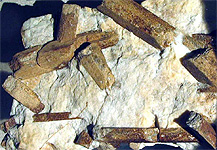
Poisonous and radioactive dangerous stones and minerals
** - poisonous stones and minerals (mandatory check in the chemical laboratory + explicit indication of toxicity).
** - radioactive stones and minerals (mandatory check on the standard dosimeter + ban on open sales in the case of radioactivity over 24 milli / g / h + additional measures of population protection).
All rare stones are subject to mandatory inspection at the standard dosimeter for the permissible level of radiation and in the chemical laboratory for the absence of poisonous and evaporating components that are dangerous to humans and the environment.


Comments
When commenting on, remember that the content and tone of your message can hurt the feelings of real people, show respect and tolerance to your interlocutors even if you do not share their opinion, your behavior in the conditions of freedom of expression and anonymity provided by the Internet, changes Not only virtual, but also the real world. All comments are hidden from the index, spam is controlled.